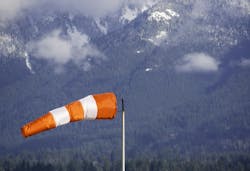NASA uses lasers to measure wind to improve forecasting from air and space
WASHINGTON - Since last fall, NASA scientists have flown an advanced 3D Doppler wind lidar instrument across the United States to collect nearly 100 hours of data — including a flight through a hurricane. The goal? To demonstrate the unique capability of the Aerosol Wind Profiler (AWP) instrument to gather extremely precise measurements of wind direction, wind speed, and aerosol concentration – all crucial elements for accurate weather forecasting, Charles G. Hatfield writes for NASA. Continue reading original article.
The Military & Aerospace Electronics take:
30 April 2025 - “There is a lack of global wind measurements above Earth’s surface,” explained Kris Bedka, the AWP principal investigator at NASA’s Langley Research Center in Hampton, Virginia. “Winds are measured by commercial aircraft as they fly to their destinations and by weather balloons launched up to twice per day from just 1,300 sites across the globe. From space, winds are estimated by tracking cloud and water vapor movement from satellite images.”
Mounted on a NASA Gulfstream III aircraft, the Aerosol Wind Profiler (AWP) emits 200 laser pulses per second downward, scattering off airborne particles like dust, pollution, smoke, and clouds. The Doppler shift in these reflected signals reveals wind speed and direction. AWP sends pulses in two directions, 90 degrees apart, to build a detailed 3D wind vector profile across different altitudes. This high-resolution data enhances weather forecasting, earning AWP a place in NOAA’s Joint Venture Program, which evaluates promising atmospheric technologies. NASA also supported AWP to boost joint return on investment. During its first collaborative flight, AWP gathered wind data, while NASA’s HALO instrument measured aerosols and water vapor, and NOAA dropsondes collected temperature, moisture, and wind data, providing a comprehensive atmospheric snapshot.
Jamie Whitney, Senior Editor
Military + Aerospace Electronics
